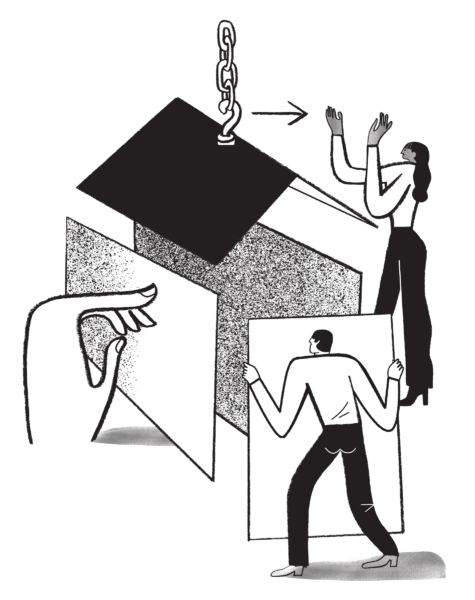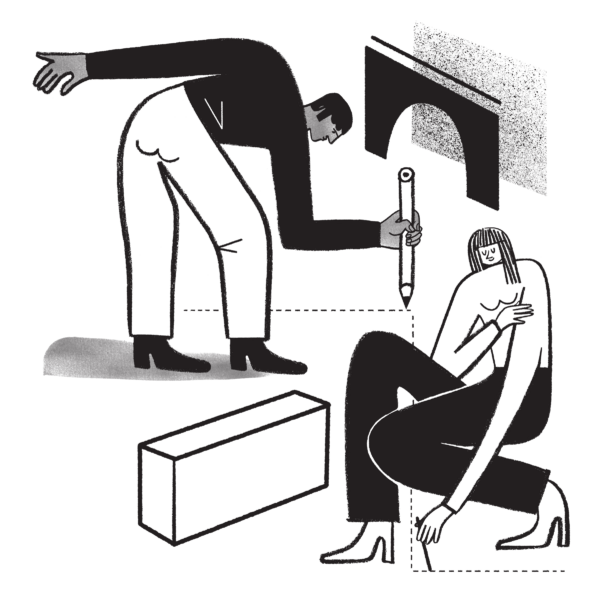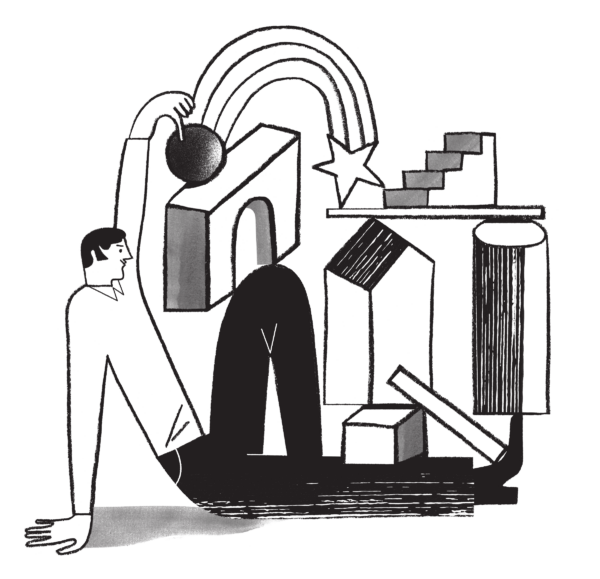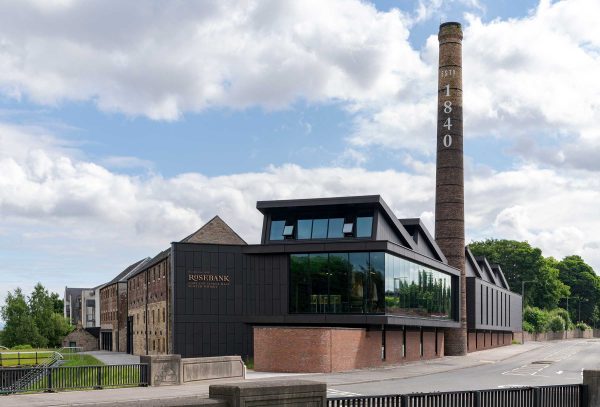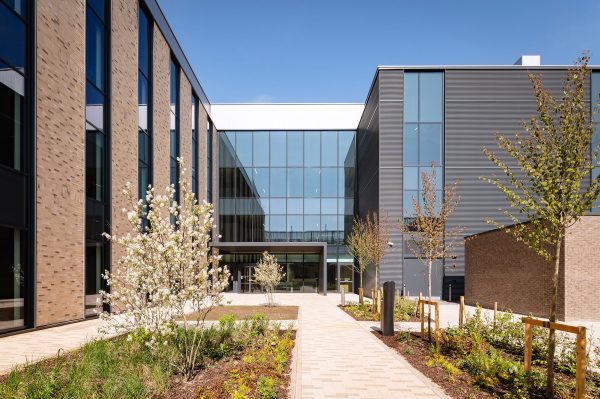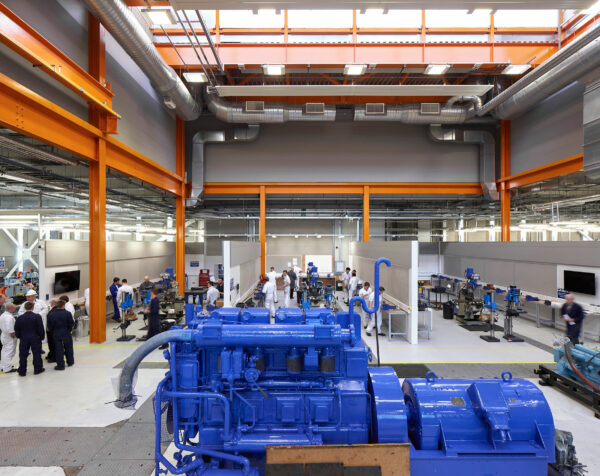The National Robotarium
Pioneering Innovation
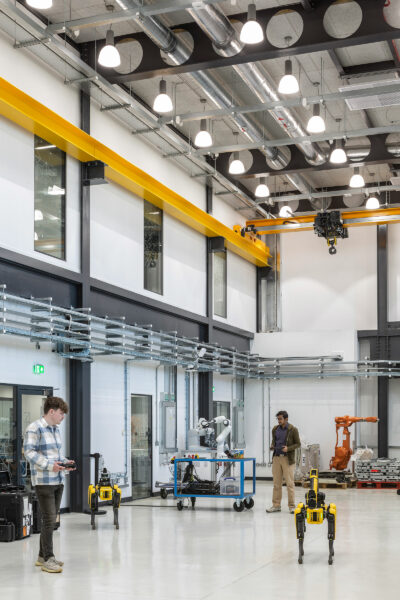
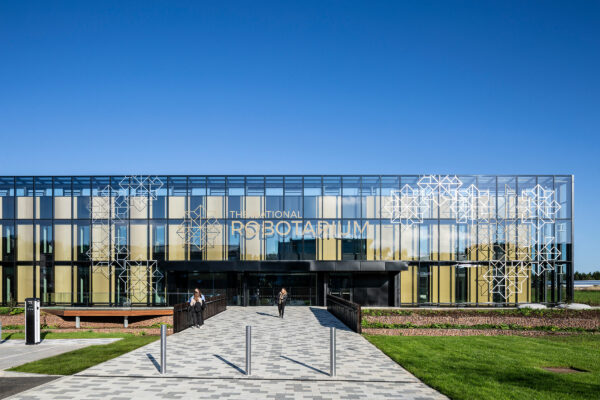
This award-winning building is a state-of-the-art facility providing a range of laboratories, office and flexible space. The strategic brief was informed through a high level of consultation with end users. Key to the success of this project was the facilitation of collaboration between academia and commercial partners.
- Location Edinburgh
- Client Heriot Watt University
- Status Complete
- Services Consultancy, Architecture
- Photography Keith Hunter
From the outset, Heriot-Watt University had a clear vision “to create the UK’s leading innovation hub for the practical application of robotics and autonomous systems”. A collaborative partnership between Heriot-Watt and Edinburgh Universities and commercial partners, the UK’s first National Robotarium was commissioned.
The first of its kind, this facility provides a dedicated hub for the acceleration of knowledge and innovation within the industry.
MLA were honoured to play a key role in this ‘once in a lifetime’ project. Our integrated design service provided strategic consultancy, architecture and interior design, from ideation to completion.
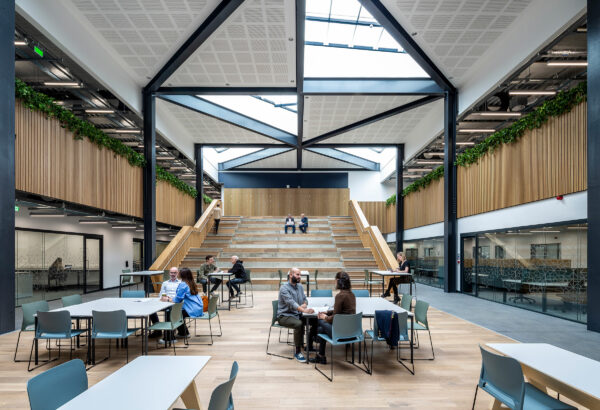
Design Approach
A high level of consultation with end users informed the strategic brief and building requirements. In-depth departmental interviews and stakeholder workshops defined the unique lab configurations, map out adjacencies and shared space.
The building is physically defined by the central forum and provides a range of laboratories, office and flexible space for academia and industry to work and collaborate.
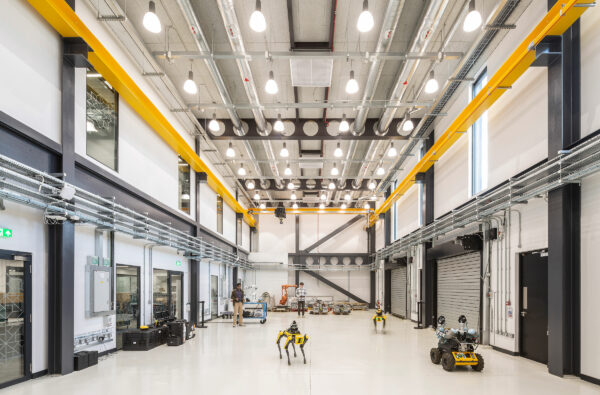
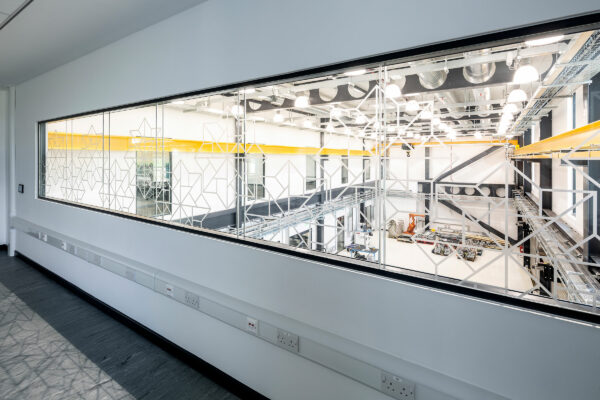
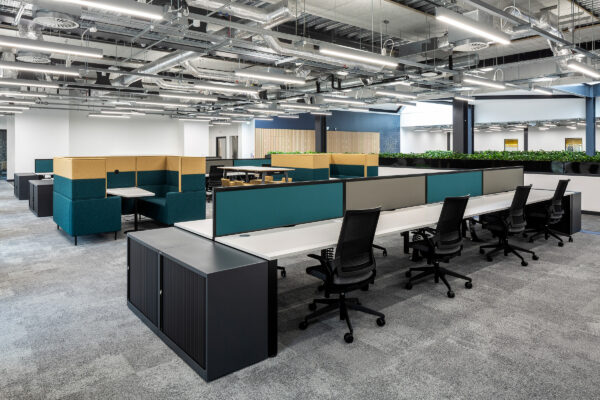
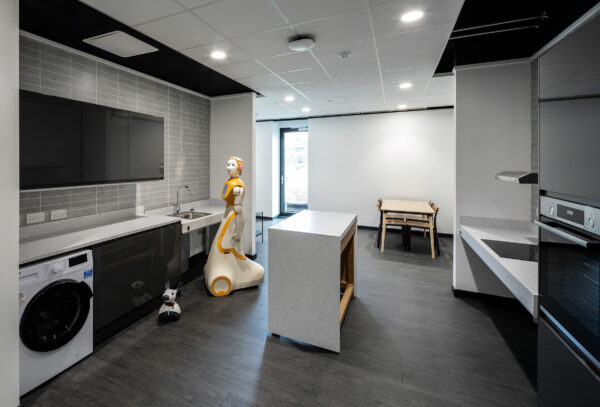
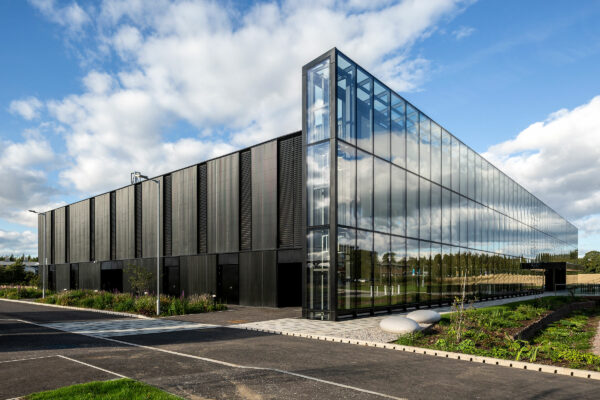
Placing three faculties – RAS Labs (Robotic Autonomous Systems), HRI (Human Robotic Interactions) and Ultra Labs (Lasers) – around a central forum space promotes collaboration. With a place to gather for lectures, events, ad-hoc meetings - social connection is encouraged.
The RAS (Robotics & Autonomous Systems) labs focus on larger scale industrial robotics. Double height space can be used for testing on drones. And roller shutter doors open to the back of the building provide access for large equipment for research and testing.
Ultra labs – precision laser application labs – research and manufacture on a micro scale and contain state-of-the-art equipment. Strategically locating this close to the RAS labs facilitates collaboration between the two departments.
The HRI department concentrates on human experience, a place to study interaction between robots and people. Spaces are flexible and can mimic daily life settings e.g. a supermarket aisle, hospitals and built in assisted living apartments.
Sustainability at its Core
A “fabric first” approach was used for the envelope design, where airtightness and increased thermal performance reduce energy demand. The high-quality system envelope creates a contemporary and crisp aesthetic.
This pioneering facility deserved to have an innovative ‘shop window’ and symbolic presence to match. The vibrant, fully glazed double skin façade provides this, with both visual impact and sustainable properties. Integrated feature lighting and branding manifestations enhance this signature element to provide a unique and controllable appearance. The facility is instantly recognisable and a destination within the University campus.
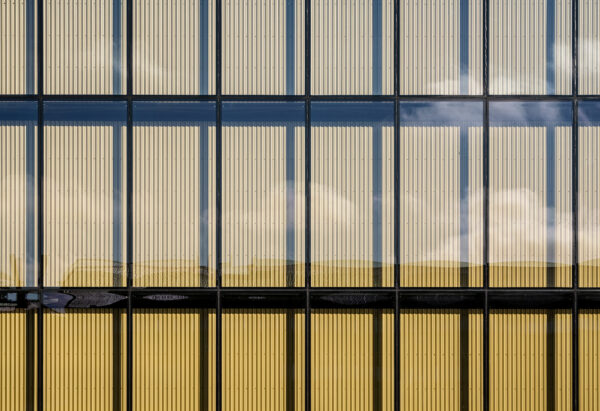
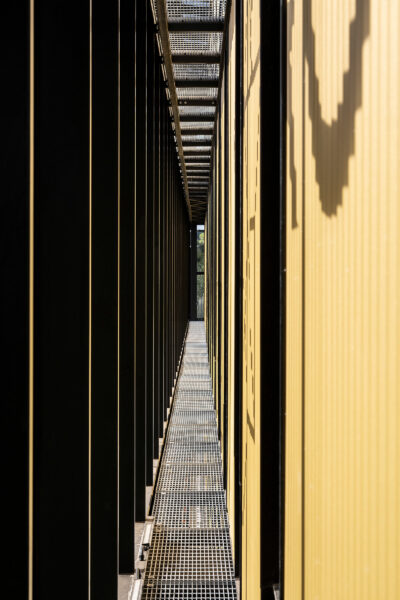
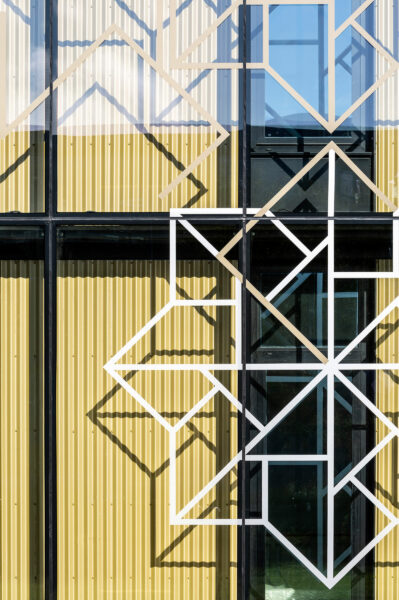
Potential Realised
Collaboration was the critical success factor for the project which is physically defined by the central Forum space. This is supported by physical and visual transparency and connectivity for all building users.
The mix of space types and finishes complement the overall experience. Modern, industrial and digital styles are complemented by warm, rich upholstery, natural planting and timber lined reception and auditorium spaces.
The result is a hub for the industry to create, develop and test robotics that have a real-world impact.
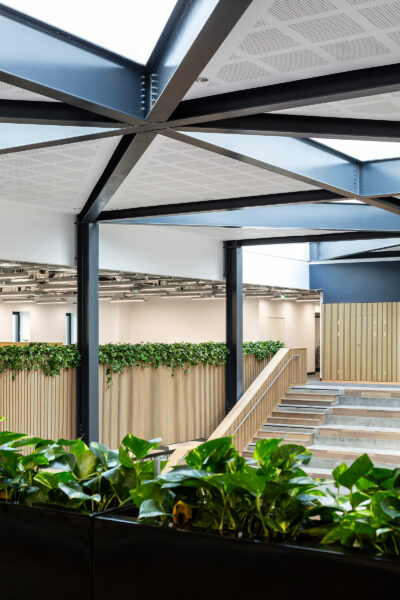
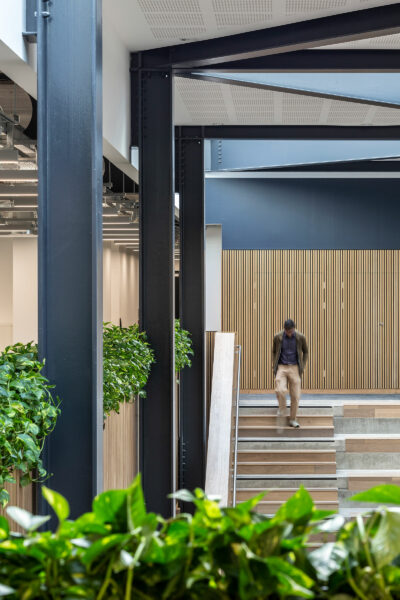

Awards
- Scottish Property Awards Architectural Excellence Highly Commended 2023
- Learning Places Scotland Award Project of the Year Winner 2023













